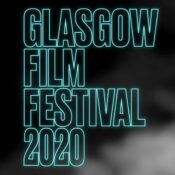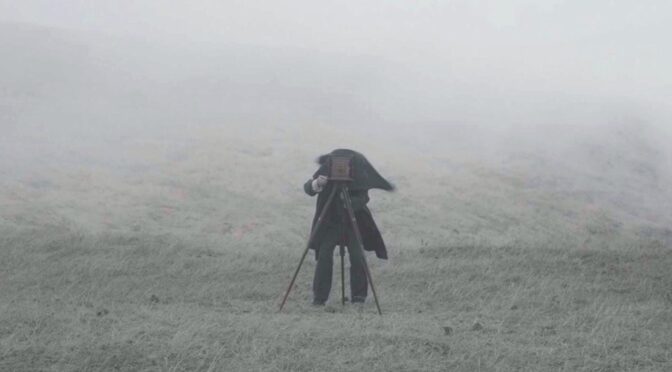 Objects in front of the camera are not always what they appear. Photographic reality can be manipulated, and the camera does not have a neutral gaze – what gets rendered visible or developed is a political act.
Objects in front of the camera are not always what they appear. Photographic reality can be manipulated, and the camera does not have a neutral gaze – what gets rendered visible or developed is a political act.
In Théo Court’s haunting BLANCO EN BLANCO, which won Best Director in the Horizons section of the Venice Film Festival in 2019, he interrogates the images we create of nations and ourselves through photography, while drawing our attention to the ghostly traces of dark history that mar these images.
It begins when photographer Pedro (Alfredo Castro) ventures to an isolated area of Tierra del Fuego at the edge of the South American mainland at the turn of the twentieth century. He has been summoned to take wedding photographs for a mysterious landowner named Mr Porter and his intended child bride, an adolescent girl named Sara.
As Pedro photographs Sara in her wedding dress, her soon-to-be husband is nowhere in sight for the portraits. Mr Porter remains absent for the duration of the film, but his presence is still hauntingly felt. There is a sense of an oppressive and ominous male gaze hanging over every moment: the opening scene of Pedro posing Sara is deeply uncomfortable. He compliments beauty as he adjusts her limbs like she is a doll, complimenting the tightness of her dress against her body, and asking her to show more of her leg to his camera. Even if these interactions never quite reach the level of violence or assault, these scenes are difficult to endure, creating a stomach-churning sense of unease that pervades the atmosphere of the film. Pedro strives to produce “beautiful” images, but his methods seem to have more than just aesthetics in mind.
Soon, Pedro is asked to take photographs that act as records of Mr Porter’s estate – animals, land, and people that are all deemed his “property.” Pedro becomes infatuated and intoxicated by the strange place he finds himself in. But as he becomes increasingly obsessed with the young Sara and entranced by the eerie atmosphere of Mr Porter’s estate, he also finds himself caught up in another facet of his patron’s work: exterminating the native Selk’nam people. It does not take long before he descends to documenting genocide through his camera.
The white men take a perverse pride in the indigenous people they slaughter, treating their lives and bodies with disregard and taking trophies from their victims. “When did we kill him?” some of the settlers wonder when they come across one body, approaching their acts with glibness. Pedro bears witness to genocide enacted by the white settlers against the indigenous peoples, his camera ever-present as he finds himself drawn in deeper and deeper into the unforgiving terrain and brutal acts. But he is not merely a spectator or passive observer to the acts of violence. As he takes images of workers carrying out their duties of exploiting the land and people and enforcing so-called security – as well as in Porter’s words, making history by “carving out a homeland” – he participates in the creation and propagation of an imperialist and colonialist gaze.
The photographs that Pedro takes are captured in striking tableaux onscreen, half-frozen figures confronting the camera. Their silence is profound. Perhaps BLANCO EN BLANCO’s most noticeable feature is how it is not afraid of silence, absence, and white space, saying as much with what it includes as it does with what it leaves out. The film takes a restrained and sober approach, the slowness and quietness of the desolated landscape felt intensely through the spectacular cinematography by José Alayón. The pacing can tend to feel slow as scenes meander, following the characters as they wander through snowy forests or journey with no clear destination. Yet there is always a sense that something sinister is lurking in the darkness, even if it ultimately never entirely comes into the light.
While the meditations on settler violence are mostly subtle and slow-burning, at times the film’s political statements are offered up more bluntly, such as the deeply ironic moment when Pedro is told to think of his work as a photographer as “humanitarian work.” In the final scene, we see just how frenzied and violent Pedro can become even if he is not the one killing the natives or shooting them with his guns. He is still shooting photographs, enacting violence with his lens. He directs the scene of warriors, weapons, and dead bodies of indigenous women, frantically racing to capture his scene before he loses the light. He shouts at the men “don’t move,” then directs some of them to pose just so or step on the corpses. It has to look “beautiful” – he returns to that word to try to lend an artistic quality to the work he does as if that forgives it. And there is something perversely beautiful about the stark scene he orchestrates, and in the film that Court creates. But with that beauty comes the reminder of profound ugliness and horrors that cannot be contained within the frame.

